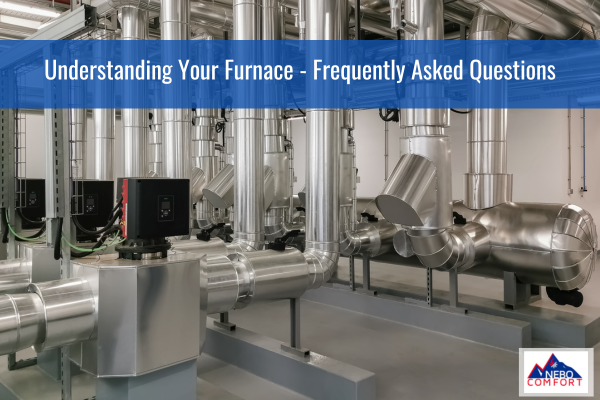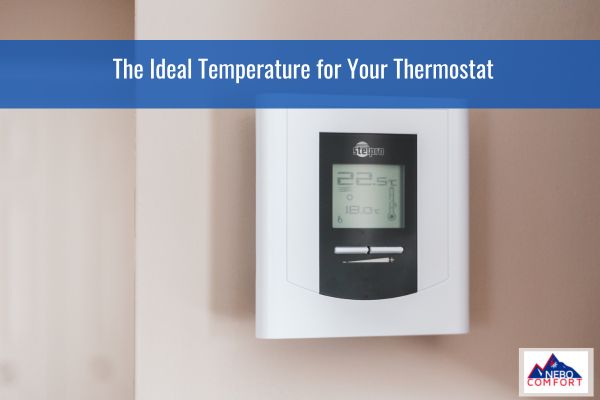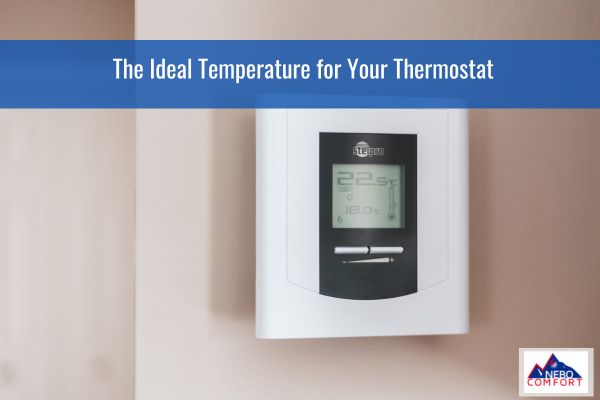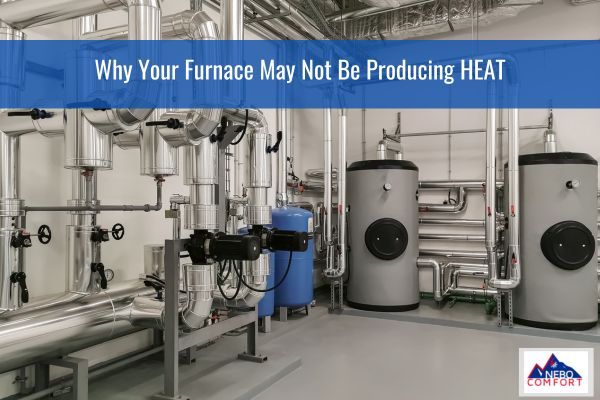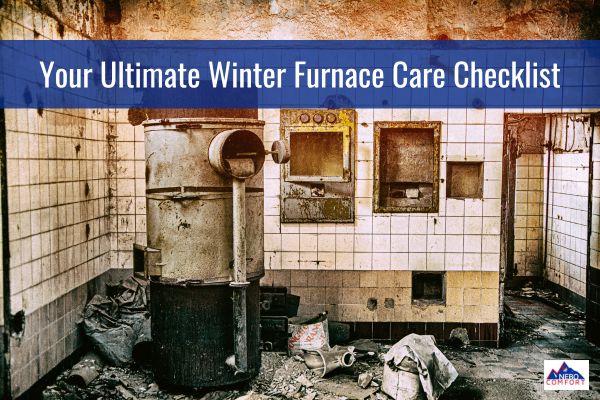Welcome to Nebo Comfort, your trusted partner in creating a warm and cozy haven for your home.
At Nebo Comfort, we understand the significance of a well-functioning heating system during the winter months, and we are committed to ensuring that your home remains a comfortable retreat regardless of the weather outside.
With years of expertise in the industry, we offer a comprehensive range of services, from furnace maintenance and repairs to energy-efficient solutions tailored to your unique needs. Our team of skilled professionals is dedicated to providing top-notch service, prioritizing your comfort, safety, and peace of mind.
Experience the warmth of a well-maintained home with Nebo Comfort – where your comfort is our priority.
The Top 5 Furnace Questions Homeowners Have Before Winter
Homeowners often have several questions about their furnace during the winter to ensure it operates efficiently and keeps their home warm. Here are the top five questions they may have:
Trust Nebo Comfort With All Your Heating, Cooling, & Home Comfort Needs
It is never pleasant when your home comfort systems aren’t working. Let us help!
1. Why is my furnace not producing heat?
This is a common concern, and it can have various causes. It could be due to a malfunctioning thermostat, a pilot light or ignition issue, a clogged air filter, or problems with the gas supply. Troubleshooting these issues may involve checking the thermostat settings, inspecting the pilot light, replacing the air filter, or calling a professional for assistance.
2. How can I improve energy efficiency and reduce heating costs?
Homeowners are often concerned about energy efficiency, especially during the winter when heating costs can rise. Common suggestions include regular maintenance (cleaning and inspecting the furnace), sealing drafts around windows and doors, using a programmable thermostat to regulate temperature, and ensuring proper insulation in the home.
3. What should I do if there’s an unusual noise coming from the furnace?
Unusual sounds from the furnace can be alarming. Rattles, bangs, squeaks, or other noises may indicate issues with the blower motor, fan, or other components. Homeowners should turn off the furnace and contact a professional technician to diagnose and address the problem promptly.
4. How often should I change the furnace filter?
Regularly changing the furnace filter is crucial for maintaining optimal performance. Homeowners should typically replace or clean the filter every 1-3 months, depending on the type of filter and usage. A dirty or clogged filter can restrict airflow, reduce efficiency, and lead to more significant issues with the furnace.
5. What maintenance tasks should I perform to keep my furnace running smoothly?
Routine maintenance is essential for the longevity and efficiency of a furnace. Homeowners should schedule professional annual inspections and cleanings. Additionally, they can perform tasks like changing the air filter regularly, keeping the area around the furnace clean and unobstructed, and checking for any signs of wear or damage.
It’s important to note that while some troubleshooting and maintenance tasks can be handled by homeowners, certain issues may require the expertise of a qualified HVAC professional.
Regular professional inspections and maintenance are crucial for ensuring the safe and efficient operation of a furnace.
Why Isn’t My Furnace Producing Heat?
There are several potential reasons why your furnace may not be producing heat. Here are some common issues to consider:
-
Thermostat Issues:
The thermostat may not be set correctly, or there could be a malfunction. Ensure that the thermostat is set to the desired temperature and mode (heating), and consider replacing the batteries if it’s a battery-powered thermostat.
-
Pilot Light or Ignition Problems:
If you have a gas furnace, a malfunctioning pilot light or ignition system can prevent the furnace from producing heat. Check to see if the pilot light is lit. If it’s out, you may need to relight it according to the manufacturer’s instructions. If you have an electronic ignition system, a professional technician may need to inspect and repair it.
Ensure that the gas supply to the furnace is turned on. If the gas valve is closed or there is a problem with the gas line, the furnace won’t be able to produce heat.
A dirty or clogged air filter can restrict airflow, causing the furnace to overheat and shut down as a safety measure. Check and replace the air filter if it’s dirty, and make a habit of doing this regularly to ensure proper airflow.
The blower motor is responsible for distributing heated air throughout your home. If it malfunctions, the furnace may produce little or no heat. Unusual noises or a lack of airflow may indicate an issue with the blower motor.
For gas furnaces, a faulty thermocouple can lead to the pilot light going out, preventing the furnace from producing heat. A professional technician can test and replace a malfunctioning thermocouple.
-
Electronic Control Failure:
Modern furnaces have electronic controls that regulate various functions. Malfunctions in these controls can disrupt the heating process. Professional diagnosis and replacement of faulty components may be necessary.
If you’ve checked the thermostat, pilot light, and air filter and the furnace still isn’t producing heat, it’s advisable to contact a licensed HVAC professional. They can conduct a thorough inspection, identify the specific issue, and perform the necessary repairs to get your furnace back in working order. Regular professional maintenance can also help prevent such issues and ensure the efficient operation of your heating system.
What maintenance tasks should be performed to keep my furnace running smoothly?
Regular maintenance is essential to keep your furnace running smoothly and efficiently.
Here are some key maintenance tasks that homeowners can perform to ensure the optimal performance of their furnace:
-
Replace or Clean Air Filters:
One of the most important tasks is to regularly check and replace or clean the air filter. A dirty or clogged filter can restrict airflow, reduce efficiency, and lead to increased energy consumption. Check your furnace’s manual for guidance on the type of filter and how often it should be replaced or cleaned.
-
Check the Thermostat:
Verify that the thermostat is working correctly. Ensure that it responds to temperature adjustments and that the displayed temperature matches the actual room temperature. If you have a programmable thermostat, review and update the settings as needed.
-
Inspect and Clean Vents and Ducts:
Ensure that vents and ducts are free of obstructions, such as furniture, curtains, or debris. Vacuum and dust the vents to prevent blockages and ensure proper airflow throughout the home.
-
Clean Around the Furnace:
Keep the area around the furnace clean and free from clutter. Avoid storing items near the furnace to allow for proper ventilation and prevent the risk of fire hazards.
-
Check for Gas Leaks:
If you have a gas furnace, it’s crucial to check for gas leaks regularly. Pay attention to any unusual smells, such as the scent of natural gas. If you suspect a gas leak, turn off the gas supply immediately and contact a professional.
-
Inspect the Flue Pipe and Exhaust System:
Ensure that the flue pipe and exhaust system are free of obstructions, such as debris or bird nests. A clear path for exhaust gases is essential for the safe operation of the furnace.
-
Schedule Professional Inspections:
While homeowners can perform certain maintenance tasks, it’s advisable to schedule annual professional inspections. HVAC technicians can identify potential issues, clean and lubricate components, and ensure that the furnace is operating safely and efficiently.
-
Lubricate Moving Parts:
Some furnace components, such as the blower motor, may have moving parts that require lubrication. Refer to the manufacturer’s guidelines for instructions on lubricating these components to prevent excess friction and wear.
-
Test the Ignition System:
For gas furnaces, test the ignition system to ensure it starts the furnace correctly. If you notice any issues with ignition, such as delayed or failed ignition, consult with a professional technician.
-
Monitor Carbon Monoxide Detectors:
Install carbon monoxide detectors in your home, especially near sleeping areas. Regularly check and replace the batteries in these detectors. If a carbon monoxide alarm sounds, evacuate the premises and contact emergency services immediately.
Remember that while some maintenance tasks can be performed by homeowners, certain tasks, such as electrical or gas-related repairs, should be left to qualified professionals.
Regular maintenance not only helps prevent breakdowns but also ensures that your furnace operates efficiently, saving you money on energy costs and extending the lifespan of your heating system.
Conclusion
In the pursuit of a warm and worry-free home during the colder months, diligent furnace maintenance is key. By incorporating these routine tasks into your seasonal checklist, you not only enhance the efficiency of your heating system but also contribute to its longevity.
At Nebo Comfort, we understand the significance of a well-maintained furnace in ensuring your home remains a cozy haven throughout the winter. Our team of dedicated professionals is ready to assist you with comprehensive furnace inspections, repairs, and personalized solutions.
Don’t let the chill compromise your comfort—schedule a free consultation with Nebo Comfort today.
Let us be your trusted partner in creating a warm and inviting home environment for you and your loved ones.


